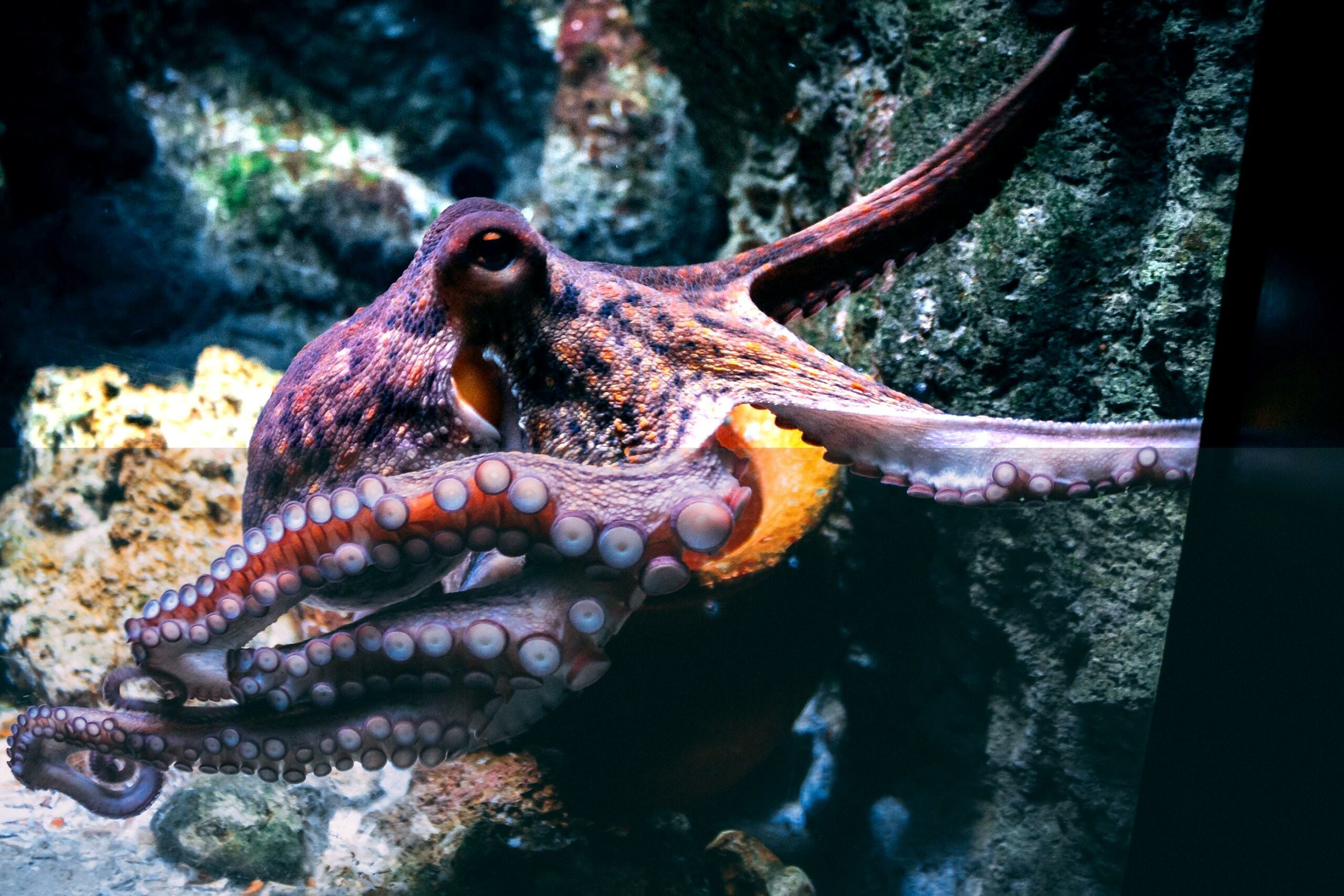Are you ready to dive into the depths of the ocean and uncover some mind-boggling secrets? Get ready to be amazed as we explore the mesmerizing world of the enigmatic glass squid. In this article, we will be revealing some fascinating and fun facts about this fascinating cephalopod. From its transparent body that allows it to blend seamlessly into its surroundings to its incredible bioluminescent abilities, we will dive deep into the mysterious world of the glass squid. So buckle up and get ready for an adventure like no other as we unveil the captivating secrets of this elusive creature.
Fun Facts about Glass Squid
Glass squids, with their unique and mesmerizing features, have always been a subject of fascination for marine enthusiasts. Today, let’s dive deep into the mysterious world of these enigmatic creatures and unveil some fascinating fun facts about the glass squid.

1. Nature’s Master of Disguise
If you ever come across a glass squid, you might mistake it for a living piece of glass. This incredible creature has a transparent body that allows it to blend seamlessly with its surroundings, making it almost invisible to predators. The glass squid’s ability to camouflage itself is truly remarkable.
“The glass squid is nature’s master of disguise, blending effortlessly into the deep-sea environment with its transparent body.”
2. A Transparent Marvel of the Deep
With its long, slender body and large captivating eyes, the glass squid is a breathtaking sight to behold. Picture a blue, transparent organism, around 200 mm (7.9 in) in size, gracefully maneuvering through the depths of the ocean. It’s an unforgettable image, almost like something out of a dream.
“The glass squid’s enchanting appearance, with its ethereal transparency and striking eyes, makes it a true marvel of the deep sea.”
3. The Origins of the Glass Squid’s Name
Known as the “glass squid” due to the transparent nature of most species, these incredible creatures have various adaptations that make them perfectly suited for their oceanic habitat. Their transparency provides camouflage in partially sunlit shallow waters, allowing them to stay hidden from both predators and prey.
“The glass squid owes its name to the crystal clarity of its body, which acts as a natural cloak in the sunlit waters it calls home.”
4. A Fighter with Tricks up Its Sleeve
Don’t be fooled by its delicate appearance—the glass squid knows how to defend itself. When faced with danger, it can curl its body inward, creating a protective ball. Additionally, glass squids have the ability to release ink, further confusing predators. These defense mechanisms make them formidable fighters in the deep ocean.
“Even though it seems delicate, the glass squid can hold its own with impressive defensive tricks, like curling up into a protective ball or releasing ink to fend off predators.”
5. Guardians of the Deep
Glass squids play a crucial role in deep-sea ecosystems. They feast on smaller organisms, acting as both predator and prey. This delicate balance helps maintain biodiversity and ensures the survival of numerous species in the ocean. Their presence is vital to the intricate web of life that exists in the depths.
“As guardians of the deep, glass squids form an essential link in the intricate food chain of the ocean, contributing to the delicate balance of deep-sea ecosystems.”
6. Thriving in the Abyss
Contrary to what some might think, glass squids are not endangered. Despite their elusive nature and preference for the mysterious depths of the ocean, they still exist in sufficient numbers. Their ability to avoid predators through transparency and adaptability has allowed them to thrive in their unique habitat.
“Glass squids, with their remarkable adaptations and resilience, continue to thrive in the abyssal depths, where they remain hidden yet abundant.”
In conclusion, the glass squid is a truly remarkable creature, deserving of its enigmatic reputation. From its transparent body and captivating eyes to its clever defense mechanisms and essential role in deep-sea ecosystems, this fascinating cephalopod never fails to captivate and inspire awe. With these fun facts, we hope to have shed a little light on the mesmerizing world of the glass squid.
Glass is an extraordinary material with a rich history and countless fun facts waiting to be discovered. Did you know that glass is technically a liquid, albeit a supercooled one, which is why it can slowly flow over time? Or how about the fact that glass is made by heating sand to a staggering temperature of 1700°C? To delve deeper into the fascinating world of glass, check out our curated list of fun facts about glass. From mesmerizing optical illusions to the mesmerizing process of glassblowing, you’ll be amazed at the wonders that this translucent material holds. So grab a glass of your favorite beverage, sit back, and prepare to be enchanted by the magic of glass.
Fun Facts About Glass Squid
Did you know that glass squids have the incredible ability to change their skin color? These mesmerizing creatures are truly fascinating to behold. With their transparent bodies and large round eyes, glass squids have captivated the curiosity of marine enthusiasts worldwide. If you’re eager to learn more about these mysterious creatures, check out our collection of glass squid fun facts. You’ll be amazed by their unique characteristics and peculiar behaviors. Don’t miss out on discovering the interesting facts about glass squid that will leave you in awe. Just click here for an unforgettable underwater adventure: glass squid fun facts.
If you’re seeking even more intriguing information, we’ve got you covered! Discover the most fascinating and little-known details about glass squids in our comprehensive article. From their extraordinary camouflage abilities to their peculiar mating rituals, there’s always something new to learn about these enigmatic creatures. Dive into the depths of knowledge and explore these interesting facts about glass squid. Unveil the secrets of the deep sea by clicking here: interesting facts about glass squid. Get ready for a mind-blowing journey through the world of glass squids!
Remember, the ocean is full of wonders waiting to be explored. Expand your horizons and satisfy your curiosity by following these captivating links. Embark on an educational adventure you won’t soon forget. Let the glass squid fun facts and interesting details about these remarkable creatures amaze you. Click away and prepare to be amazed!
Glass Squid Facts: The Enigmatic Cranch Squid
[youtube v=”PrPTWNPev0U”]
Glass squids, also known as the Cranch squid, are fascinating creatures that have captured the imagination of marine enthusiasts and scientists alike. With approximately 60 known species, these squids exhibit unique characteristics that set them apart from their cephalopod counterparts. While their transparent bodies are undoubtedly their most striking feature, their adaptability, defensive strategies, and crucial role in deep-sea ecosystems make them a subject of great interest.
Glass squids possess a long, slender body that gives them an almost ethereal appearance. Their transparent bodies allow them to seamlessly blend with their surroundings, making them nearly invisible to potential predators. This camouflage is particularly effective in sunlit waters, where their crystal clear bodies enable them to hide in plain sight. It is no wonder they earned the name “glass squids” due to the exquisite clarity of their bodies.
One cannot help but be captivated by the mesmerizing eyes of the glass squid. Positioned strategically within their transparent heads, these eyes are both captivating and functional. Despite their delicate appearance, glass squids possess a range of defensive tricks to protect themselves from potential threats. When faced with danger, they are adept at curling up into a protective ball, rendering themselves less vulnerable to predators. Additionally, they have the ability to release ink as a distraction mechanism.
Glass squids play a vital role in the delicate balance of deep-sea ecosystems. Feeding on fish and crustaceans, these cephalopods help maintain biodiversity and regulate populations of smaller organisms. Their adaptability and ability to avoid predators have allowed them to thrive in their unique habitat. As a result, they are not currently considered endangered, and their population continues to flourish.
Intriguingly, glass squids have been observed exhibiting different behaviors and characteristics throughout their lifespan. Juvenile glass squids are found closer to the surface of the ocean. They undergo remarkable transformations as they develop, with their eyes and fins changing position and shape. They also acquire more pigment and light-producing organs. In some instances, they may even lose their tentacles, leading to their previous misclassification as different species. As they grow larger, glass squids migrate further down the water column, eventually residing in the depths of the ocean, over a mile below the waves.
One noteworthy defensive adaptation of glass squids is their ability to produce light. Bioluminescent organs positioned beneath their eyes enable them to generate light, counteracting the potential shadow cast by their eyes and internal organs on predators lurking below. By vertically aligning these organs, they minimize the shadow created from light hitting them from above. This light, resembling the color from above, allows them to disappear when seen from the sides and below. This unique feature adds another layer of intrigue to their already captivating nature.
As with many cephalopods, glass squids have a mysterious and relatively short lifespan. While the exact duration remains unknown, evidence suggests that they likely die shortly after mating. This characteristic aligns them with other members of their family, highlighting the ephemeral nature of their existence.
In conclusion, glass squids, or Cranch squids, are extraordinary creatures that continue to captivate scientists and marine enthusiasts alike. Their transparent bodies, defensive strategies, and crucial role in deep-sea ecosystems make them a subject of great interest and admiration. These enigmatic creatures exemplify the intriguing complexities of nature and serve as a reminder of the wonders that lie beneath the ocean’s surface.
“Glass squids, with their transparent bodies and mesmerizing eyes, are captivating creatures that thrive in the deep-sea. Their adaptability and crucial role in maintaining biodiversity make them an essential component of marine ecosystems.”
FAQ
Question 1: How big can a glass squid grow?
Answer 1: The glass squid can grow up to 10 feet in length.
Question 2: Why is the glass squid’s body transparent?
Answer 2: The glass squid’s transparent body allows it to blend in with its surroundings and avoid predators.
Question 3: What is the glass squid’s primary defense mechanism?
Answer 3: The glass squid is an expert at camouflage and uses its transparency for protection.
Question 4: What are the distinguishing features of a glass squid?
Answer 4: A glass squid has a long, slender body, large eyes, and is transparent, earning it the common name “glass squid.”
Question 5: Where do glass squids live?
Answer 5: Glass squids live in deep oceans and their transparent bodies help them avoid predators.
- Unlock Water’s Symbolism: A Cross-Cultural Exploration - April 20, 2025
- Identify Black and White Snakes: Venomous or Harmless? - April 20, 2025
- Unlocking Potential: Origins High School’s NYC Story - April 20, 2025















